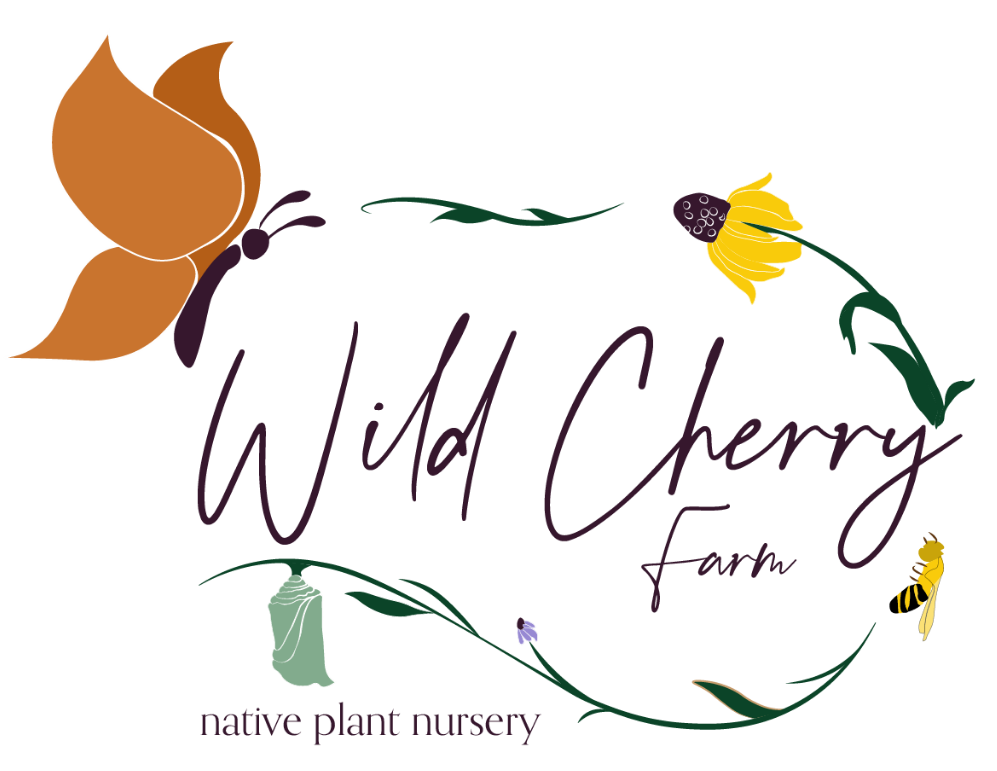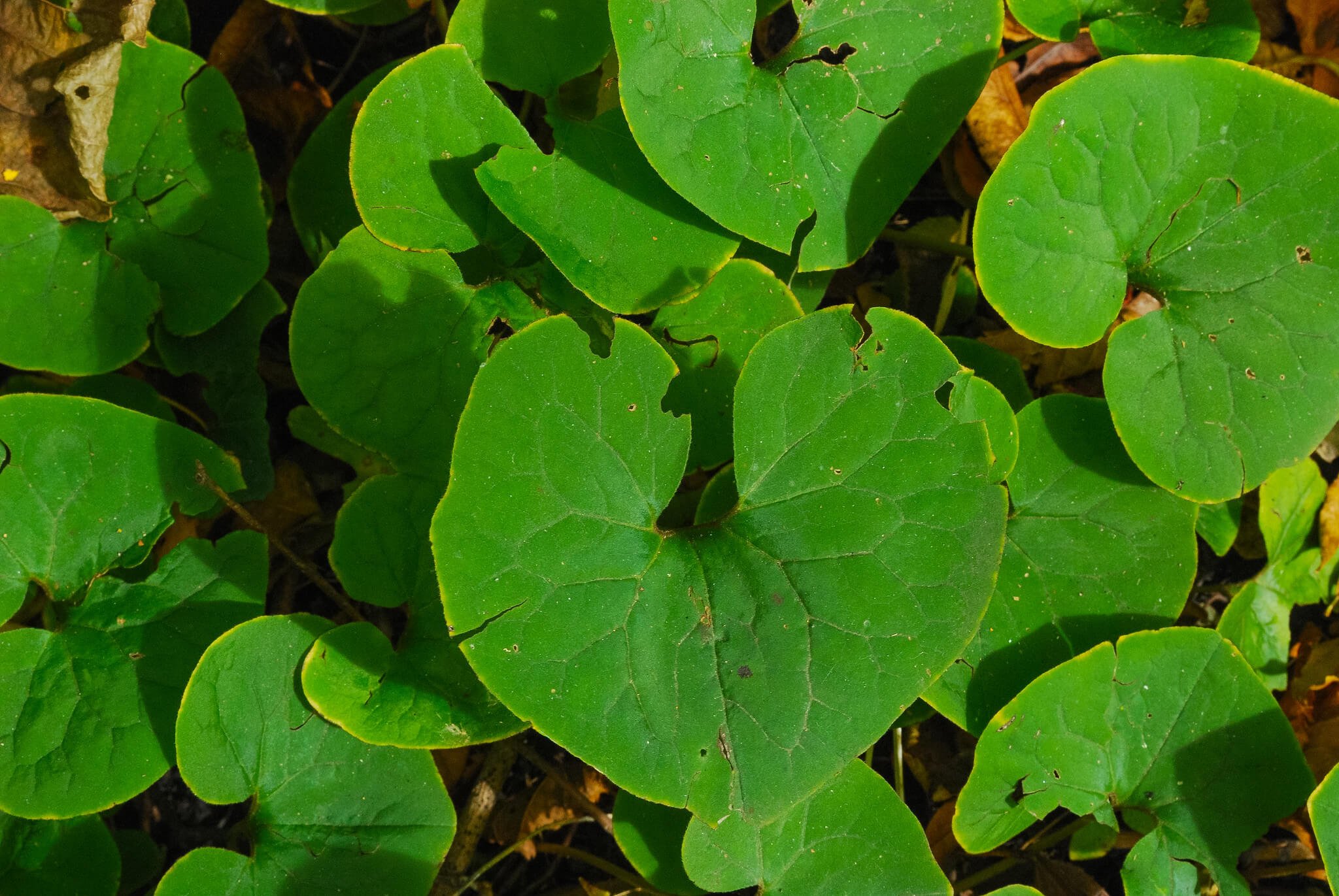 Image 1 of
Image 1 of


Zigzag Goldenrod (Solidago flexicaulis)
Zigzag Goldenrod flowers attract many kinds of native bees and butterflies (Illinoiswildflowers.info), including a number of different specialist bees (Holm, 2017). It is also the host to 135 species of Butterflies and moths in our area (nwf.org), as well as the host to an incredible 43 specialist bees (Holm, 2017) (Johnson and Colla, 2023). The insects that this plant supports are an essential food source for many birds, so although Zig Zag Goldenrod can be vigorous and therefore, not suitable for small woodland gardens, it is such a gift to pollinators. Goldenrods in general provide so many ecosystem services when most other plants are shutting down for the season. Just something to keep in mind, goldenrods do not cause hay fever! Their pollen is too heavy, it is the wind-pollinated (but not as visually obvious) ragweed that causes it.
Photo credit: Aaron Carlson
Zigzag Goldenrod flowers attract many kinds of native bees and butterflies (Illinoiswildflowers.info), including a number of different specialist bees (Holm, 2017). It is also the host to 135 species of Butterflies and moths in our area (nwf.org), as well as the host to an incredible 43 specialist bees (Holm, 2017) (Johnson and Colla, 2023). The insects that this plant supports are an essential food source for many birds, so although Zig Zag Goldenrod can be vigorous and therefore, not suitable for small woodland gardens, it is such a gift to pollinators. Goldenrods in general provide so many ecosystem services when most other plants are shutting down for the season. Just something to keep in mind, goldenrods do not cause hay fever! Their pollen is too heavy, it is the wind-pollinated (but not as visually obvious) ragweed that causes it.
Photo credit: Aaron Carlson
Zigzag Goldenrod flowers attract many kinds of native bees and butterflies (Illinoiswildflowers.info), including a number of different specialist bees (Holm, 2017). It is also the host to 135 species of Butterflies and moths in our area (nwf.org), as well as the host to an incredible 43 specialist bees (Holm, 2017) (Johnson and Colla, 2023). The insects that this plant supports are an essential food source for many birds, so although Zig Zag Goldenrod can be vigorous and therefore, not suitable for small woodland gardens, it is such a gift to pollinators. Goldenrods in general provide so many ecosystem services when most other plants are shutting down for the season. Just something to keep in mind, goldenrods do not cause hay fever! Their pollen is too heavy, it is the wind-pollinated (but not as visually obvious) ragweed that causes it.
Photo credit: Aaron Carlson
Life Cycle: Perennial
Sun Exposure: Partial shade, shade
Soil Moisture: Medium-wet, Medium-dry
Height: 3 feet
Plant Spacing: 1-2 feet
Bloom Time: August - October
Bloom Color: Yellow
Advantages: Caterpillar Favorite, Pollinator Favorite, Bird Favorite, Deer Resistant
Host Plant: 135 species of caterpillars and many moths use this as a host plant in our area (nwf.org)
Specialist Bee: Andrena aliciae, A. apacheorum, A. asteris, A. braccata, A. canadensis, A. Chromotricha, A. hirticincta, A. nubecula, A. placata, A. simplex, Perdita octomaculata, P. swenki, Pseudopanurgis aestivalis, P. andrenoides, P. compositarum, P. labrosiformis, P. solidaginis, Melissodes agilis, M. boltoniae, M. coloradensis, M. coreopsis, M. dentiventris, M. druriellus, M. fumosus, M. illatus, M. menuachus, M. microstictus, M. niveus, M. trinodis, M. wheeleri, Colletes americanus, C. compactus, C. rufocinctus, C. simulans, C. solidaginis, C. speculiferus, Dieunomia heteropoda, Dianthidium simile, Dufourea marginata, Megachile inimical, M. parallela, M. xylocopoides, and Ashmeadiella bucconis (Holm, 2017) (Johnson and Colla, 2023)
Beneficial Insects: Syrphid Flies
Complementary Plants: Big-leaved Aster, Heart-leaved Aster, American Spikenard, Blue Cohosh
Resource: Holm, Heather. Bees: An Identification and Native Plant Forage Guide. Pollination Press LLC, 2017
Resource: Johnson, Lorraine, and Sheila Colla. A Northern Gardener’s Guide to Native Plants and Pollinators: Creating Habitat in the Northeast, Great Lakes, and Upper Midwest. Island Press, 2023





